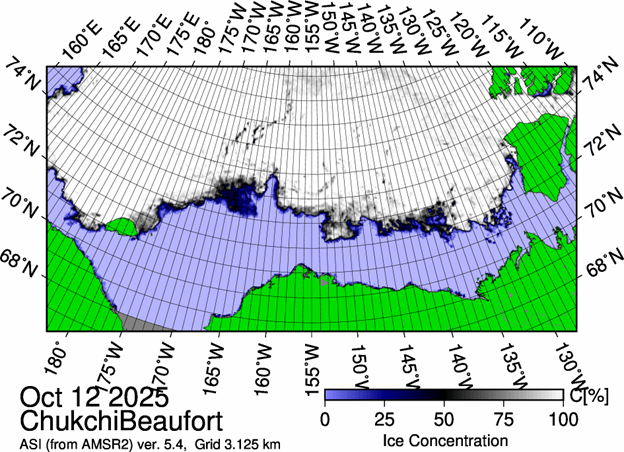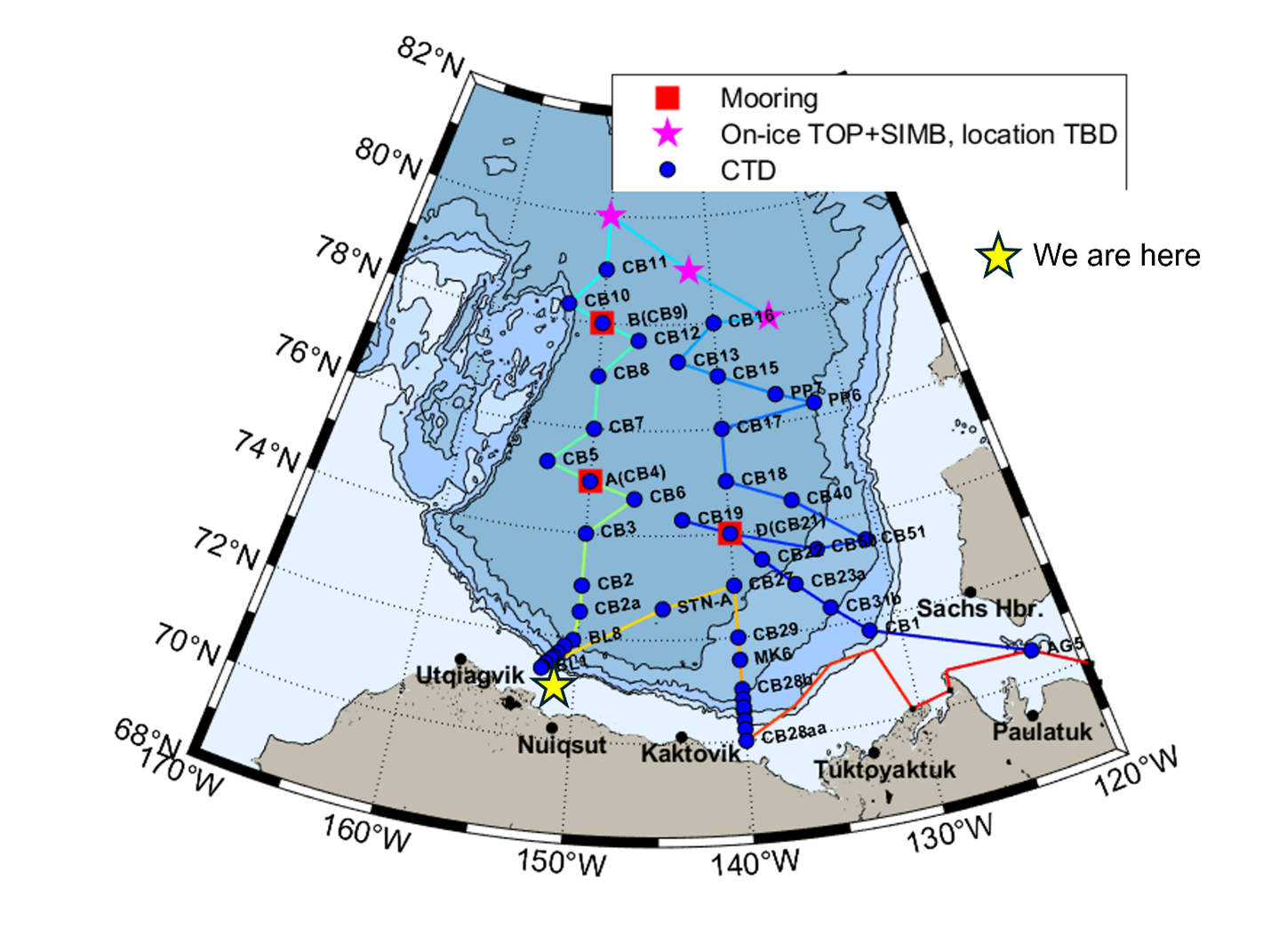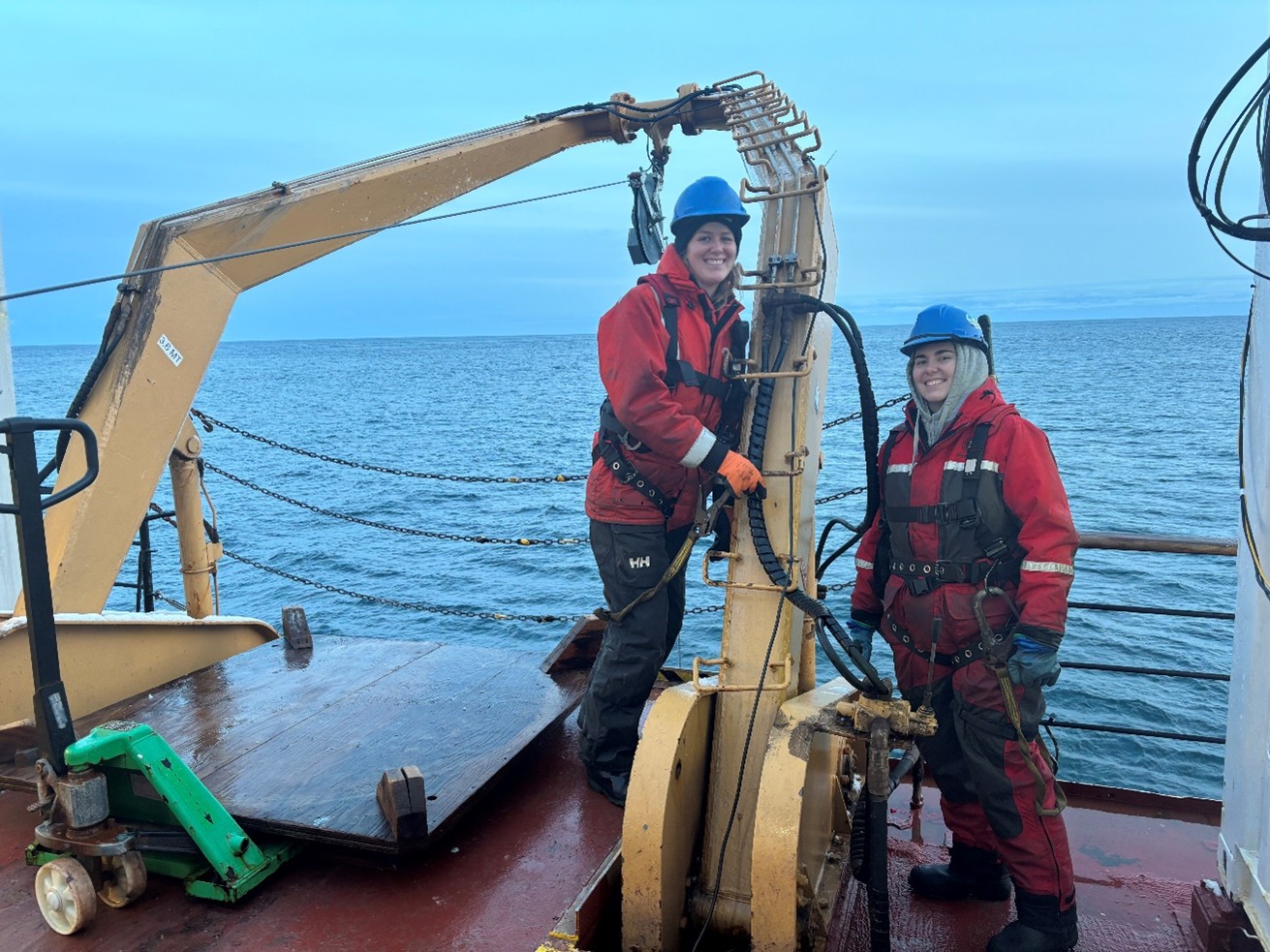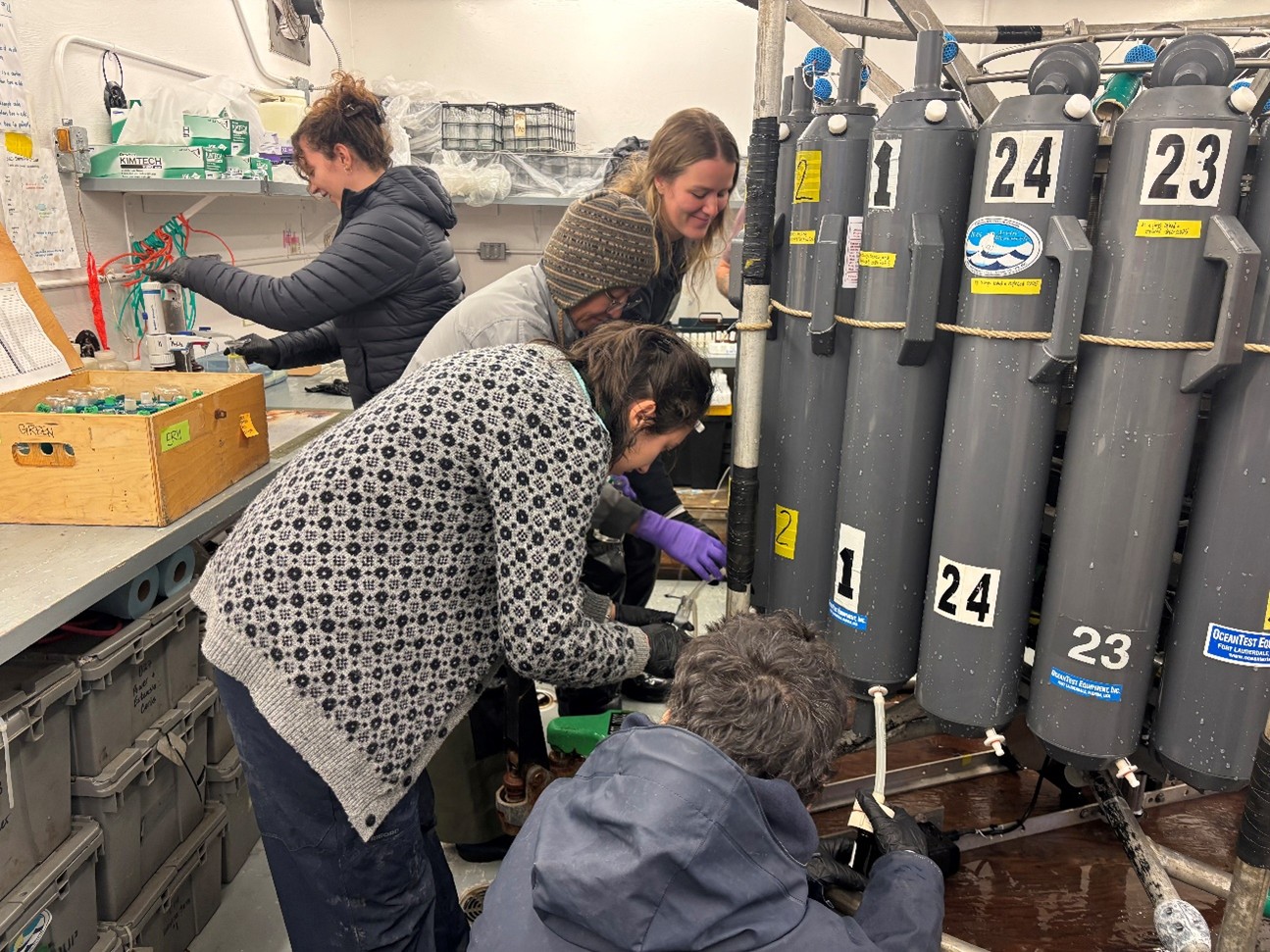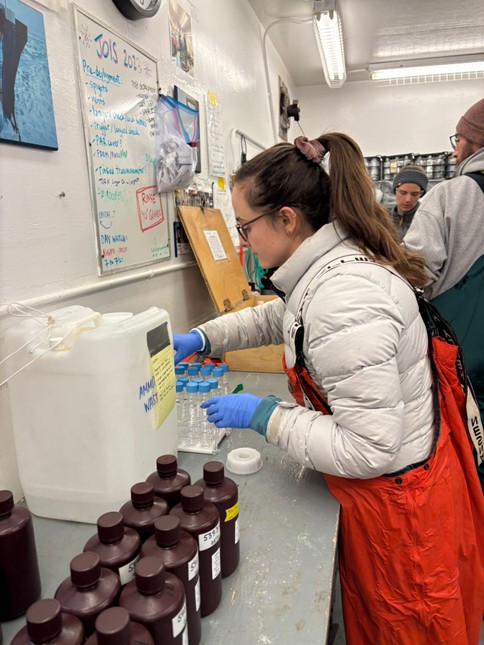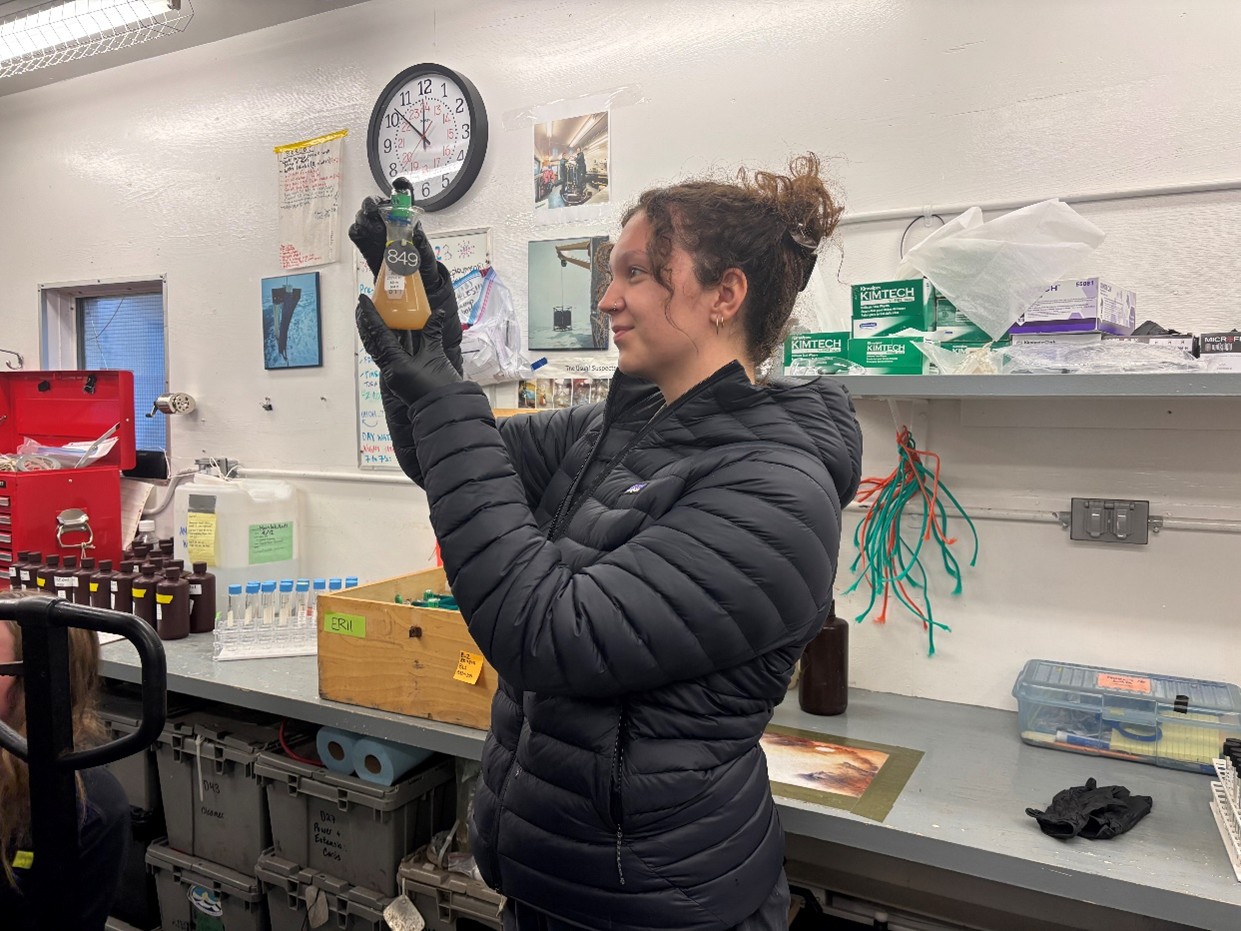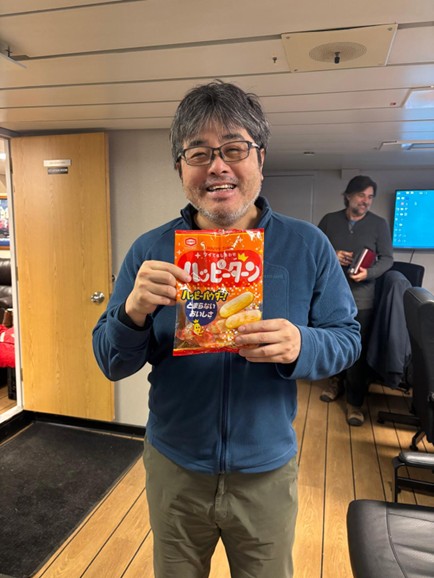Dispatch 26: Finishing the BL-Line
Jennifer Kosty (Yale University)
October 14, 2025
14:00 local, 71.18◦N, 151.10◦W
Conditions:
- Sunny
- 0% sea ice cover
- -1.5◦C
- Sunrise: 14-Oct-2025 11:22
- Sunset: 14-Oct-2025 20:17
- Day length: 8 hours, 55 minutes
We survived! After an incredibly busy night, the night watch wrapped up the shallow cast (80 m) at BL-1 around noon today, officially marking the end of the BL-line. Over the course of 24 hours, we completed 6 CTD rosette casts, 2 CTD-only casts, and 12 plankton sampling nets. We additionally collected 1120 water samples, many of which will be analyzed on board over the next few days. Safe to say, the BL-line is not for the weak! Huge thanks to deck crew for helping to complete all these casts!
Of the many water samples collected on the BL-line, 150 were ammonium samples. Ammonium is an ocean nutrient that plays a key role in the nitrogen cycle. It is preferentially consumed by plankton in the ocean (if ammonium were a food item on the Louis, it would be the chocolate chip pancakes – they always get eaten first!). Ammonium is produced when organic matter decomposes and is, therefore, found at higher concentrations in coastal areas due to increased biological productivity. It is likely present in the central Canada Basin, although at concentrations smaller than our detection limit. Ammonium samples are, additionally, time-intensive to process and require extreme care to avoid contamination (for example, by cleaning products). We, therefore, only devote these sampling efforts in regions like the BL-line, known to have concentrations above our detection limit.
While we recovered from the craziness of the BL-line, Kazu Tateyama gave a presentation summarizing the findings from our 2 big ice stations last week. He showed us ice thickness transects and a LIDAR image of one of the collected ice cores. Kazu also passed around a bag of Japanese snacks for us to enjoy during his presentation. Kazu brings different Japanese snacks to every science meeting, which is always a highlight of the day!
We are currently steaming towards the latest addition to the 2025 BGOS/JOIS expedition itinerary, a new science station located on the continental slope about halfway between the BL and MK-lines. We decided to complete the MK-line in reverse order to avoid stormy weather later in the week. This meant we would be steaming along the coast, so we decided to add another station in these previously unsampled waters. The day watch will complete a 1000 m CTD rosette cast there tonight, before we arrive at the MK-line tomorrow morning.
